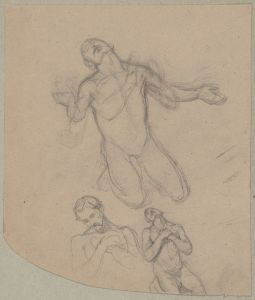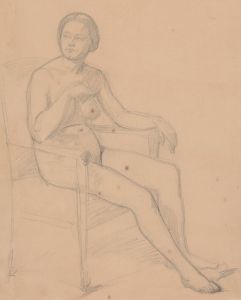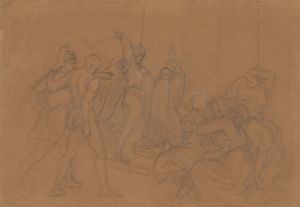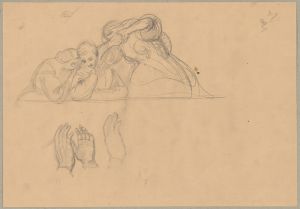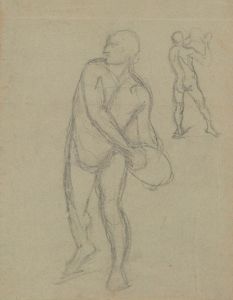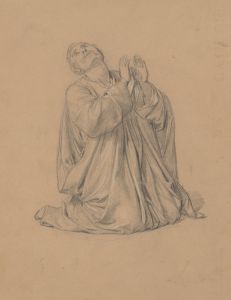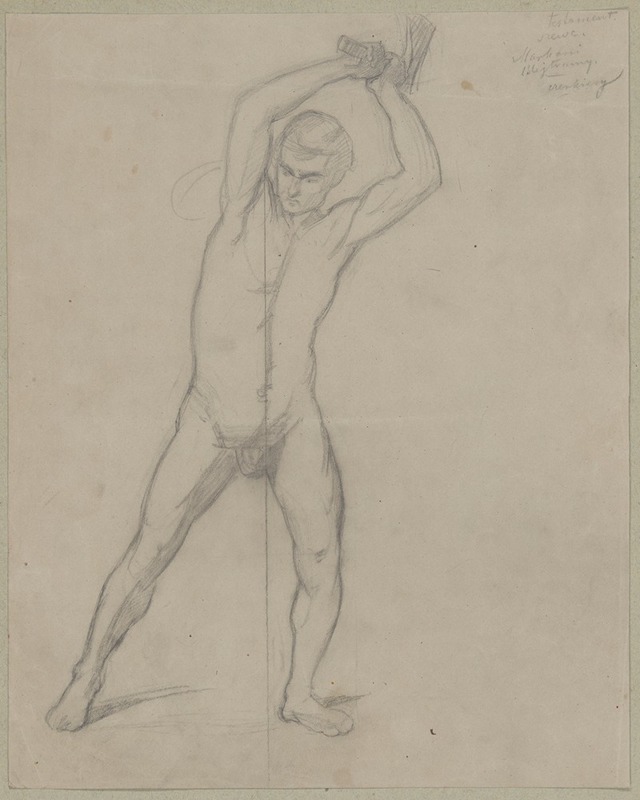
Nude sketch to the executioner with an axe to the painting ‘Martyrdom of St. Matthias’
A hand-painted replica of Józef Simmler’s masterpiece Nude sketch to the executioner with an axe to the painting ‘Martyrdom of St. Matthias’, meticulously crafted by professional artists to capture the true essence of the original. Each piece is created with museum-quality canvas and rare mineral pigments, carefully painted by experienced artists with delicate brushstrokes and rich, layered colors to perfectly recreate the texture of the original artwork. Unlike machine-printed reproductions, this hand-painted version brings the painting to life, infused with the artist’s emotions and skill in every stroke. Whether for personal collection or home decoration, it instantly elevates the artistic atmosphere of any space.
Józef Simmler, a prominent Polish painter of the 19th century, is known for his historical and religious paintings, which often depict dramatic and emotive scenes. One of his notable works is the "Martyrdom of St. Matthias," a painting that captures the intense and poignant moment of St. Matthias's martyrdom. This painting is a testament to Simmler's skill in conveying emotion and narrative through art.
St. Matthias is a significant figure in Christian tradition, known for being chosen as an apostle to replace Judas Iscariot following Judas's betrayal of Jesus. According to Christian tradition, St. Matthias met his martyrdom by being executed, and this moment has been a subject of artistic representation throughout history. Simmler's depiction of this event is particularly striking for its attention to detail and the emotional depth it conveys.
The painting "Martyrdom of St. Matthias" is characterized by its dramatic composition and the use of light and shadow to highlight the central figures. Simmler employs a realistic style, capturing the expressions and emotions of the characters involved in the scene. The executioner, with an axe in hand, is portrayed with a sense of determination, while St. Matthias is depicted with a serene and accepting demeanor, reflecting his faith and acceptance of his fate.
Simmler's work is often noted for its historical accuracy and attention to detail, which is evident in the clothing and setting of the painting. The artist's ability to convey the gravity of the moment while maintaining a sense of dignity and reverence for the subject is a hallmark of his style. This painting, like many of Simmler's works, reflects the influence of the Romantic movement, which emphasized emotion and individualism, as well as a fascination with historical and religious themes.
Józef Simmler was born in 1823 in Warsaw, Poland, and studied art in various European cities, including Dresden, Munich, and Paris. His education and exposure to different artistic styles and movements greatly influenced his work. Simmler became one of the leading figures in Polish art during his time, and his paintings often reflect the nationalistic spirit and cultural heritage of Poland.
The "Martyrdom of St. Matthias" is a prime example of Simmler's ability to blend historical narrative with emotional depth, creating a powerful visual representation of a significant religious event. Through his meticulous attention to detail and his skillful use of composition and color, Simmler brings to life the story of St. Matthias in a way that resonates with viewers and captures the essence of martyrdom and faith.
Simmler's contributions to Polish art and his ability to convey complex themes through his paintings have left a lasting impact on the art world. His works continue to be studied and appreciated for their artistic merit and historical significance.





